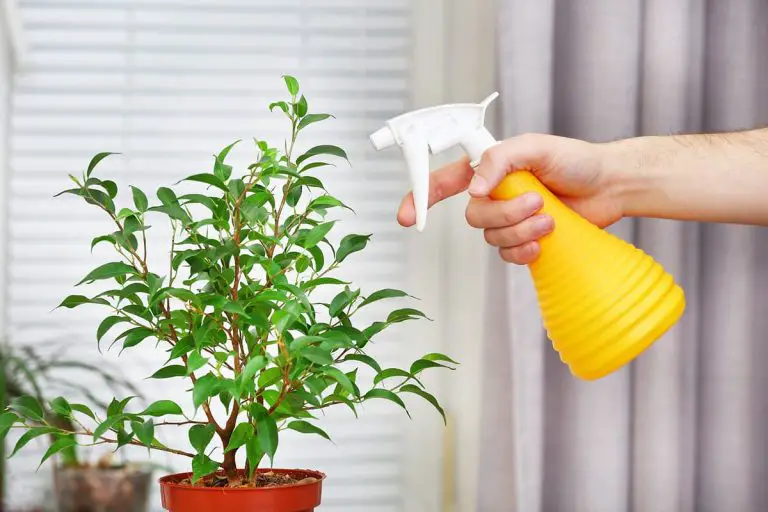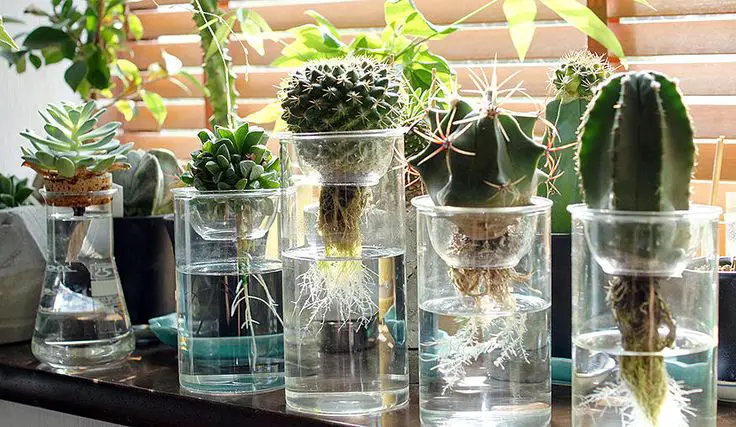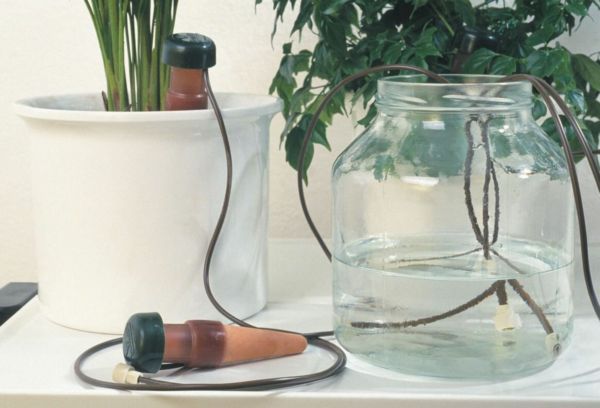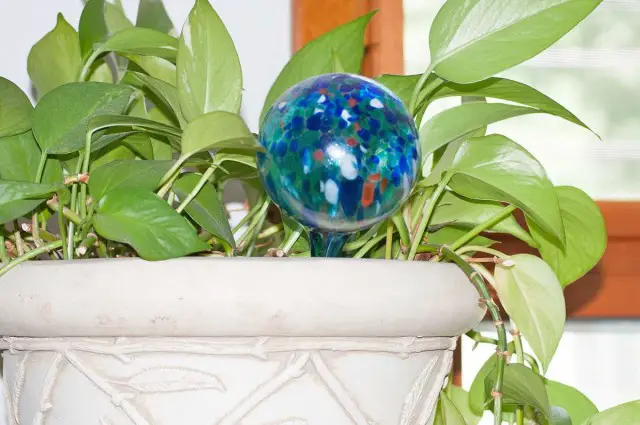Even the most scrupulous couch potatoes sooner or later face the problem of caring for plants during their absence. Business trips, vacations, interesting travels seem incompatible with the desire to have a collection of indoor plants. Many, precisely because of the impossibility of providing indoor plants with constant care, completely refuse to plant greenery in their rooms. And in vain! How to care for houseplants while on vacation, we will tell you in the article.

how to care for houseplants while on vacation?
If you are a frequent traveler and spend more time traveling than at home, you can still afford indoor plants. The main thing is their correct choice. You can take care of houseplants while on vacation by:
- Giving your plants to friends or neighbors
- Temporary plant relocation
- Growing indoor plants in hydroponics
- Using Modern automatic irrigation options
- DIY self-watering system for indoor plants
Before buying indoor plants, you should ask yourself the simplest question: “Can I afford them?” And this is not at all about the financial side of the issue. To begin with, it is worth assessing whether the conditions and care that plants need for normal development correspond to the opportunities that you can provide them or how to care for houseplants while you are on vacation.
It is no coincidence that all indoor cultures today are divided and labeled according to the category of care complexity. There are plants that cannot withstand even a slight delay in watering and require literally unremitting, daily attention and control. But subject to the arrangement of terrariums, keeping in flower showcases, even tropical exotics will not suffer during a business trip, especially if automatic humidification systems are involved.
Common indoor crops love constant soil moisture. But there are categories of plants that are very easy to care for, which are not for nothing that they recommend choosing those who have no experience in growing at all. Such crops can withstand complete drying out of the substrate, skipping feeding without any special consequences (of course, if you do not abuse their simplicity).
Plants that are quite suitable for anyone, even the most busy grower at work, include all cacti and succulents, as well as plants for which fear of the substrate drying out is not indicated in the care recommendations.
See also is baking soda good for houseplants?
A very important question is the number of plants. Frequent departures require the choice of a strategy of minimal landscaping, a reasonable limitation of the number of species. The more there are, the more difficult it will be to take care of preparing plants for vacations and business trips. Huge collections of dozens of plants in every large room, even if they are hydroponic collections, will inevitably suffer from your absence.
By choosing the right composition of indoor stars, you can create a collection that can preserve its decorativeness and health without supervision. Hardy plants are not scary to leave unattended for a while.
In addition, it is better to plan a vacation during the dormant period of the plants or seasons when the plants are easier to tolerate rare maintenance procedures. In winter, spring and autumn, even for moisture-loving plants, watering in 4-7 days is rather the norm than the exception. And the consequences of your departure will be much less evident.
Trust your plants to friends or neighbors
Indoor plants require attention and care. And in fact, they cannot replace it with anything. After all, caring for indoor pets is not limited to watering or feeding. The health of plants and their condition depends on both air humidification measures and hygiene procedures. But, first of all from the attentiveness of the owners.
Observing the plant, checking the condition of leaves and shoots, detecting the slightest signs of any irregularities are the basis for preventing problems in growing and for success.
Frequent business trips or vacations, it would seem, are completely incompatible with the rules of normal houseplant care. And the best option is to find someone who will take care of the plants for you. Even if outsiders cannot properly assess the condition of the plants without sufficient experience, they will follow the basic instructions.
If someone looks after the house, visits for cleaning, checking security systems, ventilation, then there is no problem. Sharing reciprocal favors with friends, parents, relatives is also a great option. But sometimes none of the relatives can take care of the plants. And not all neighbors want to trust not so much plants as their access to the house.
Temporary plant relocation
Transportation of plants to someone (or somewhere) “on leave” is a great way to solve the problem of caring for indoor pets while the owners are away.
Small collections can be transported to relatives or neighbors if they have a place to place the pots. So no one has to look into your house. Most willingly, colleagues-flower growers and gardeners agree to take care of other people’s plants, because they already devote a lot of time to plants and have the necessary experience for full-fledged care.
Of course, do not forget that any help requires a reward, which often serves as an additional motivation for temporary caregivers.
If you have capricious or very valuable plants, then they can be “handed over” for a while to a garden center or a flower shop, whose services you use constantly. But not everyone can boast of such an opportunity.
Moving houseplants to the garden for the summer is an acceptable, and for some crops, a preferable option. Indoor pets that love fresh air are simply transformed when kept in the garden, and if care does not prohibit, then during the trip the plants can be moved under the open sky.
True, if the plants cannot stand getting wet, then such a movement will not help much, because summer rains under a canopy do not compensate for the lack of watering. The location must be selected carefully, according to individual requirements, from among the options for the maximum permissible shading, having thought over the protection from the wind.
The best option when moving indoor plants into the garden when leaving is to add pots. It is not necessary to completely immerse the containers; it is enough just to dig them into the soil at least halfway. This option also solves the problem of protecting plants from strong winds, and prevents problems with access to water during dry days, because plants will be able to get the moisture they need from the soil.
Only strong, healthy plants that are accustomed to being outdoors and have been gradually adapted to change can be moved into the garden. It is worth digging in only crops with a strong, overgrown root system, capable of absorbing water from the soil through the drainage holes here read all about Drainage For Houseplants.
Growing indoor plants in hydroponics
Indoor “irrigation” or automatic irrigation systems are of two types temporary and permanent. The latter takes care of the plants for a long time, in fact, performing basic care functions all the time. Hydroponics is the best of these systems and one of the most fun ways to grow indoor crops.

Hydroponics keeps plant maintenance to a minimum. Absorbing only the amount of moisture that the plant needs allows you to actually leave it to itself.
The simplest hydroponic systems involve the use of porous moisture-absorbing materials (including vermiculite and the very popular substrate “seramis”), which are “saturated” with nutrient solutions and water, and then gradually and rationally supply the plant with everything it needs.
More sophisticated systems involve the use of professional “ready-made” automatic systems in flower showcases and florariums. And also – simpler and much more affordable containers with auto-irrigation or hydroponic installations (double containers, in one of which the plant grows, and in the other contains water and nutrient solutions). Thanks to the convenient level indicators, refilling water at the right time is very easy, and filling to the maximum mark allows you to not replenish the water level for a very long time.
Growing plants hydroponically allows you to provide your plants with everything they need, even if the vacation is very long. By raising the water level to the maximum, you ensure that the supply of “resources” is enough for the plants until you return.
Check also Best soil to use for houseplants.
Modern automatic irrigation options
An affordable and bright solution special “balls” for auto watering ( aqua globes, watering spheres ). A long tube leg, narrowing at the end, expanding into a spherical container for water, can be made of glass, ceramics, plastic. Usually, such simple systems of automatic irrigation look like transparent or colored balls, various shapes (for example, shells or butterflies). They can be almost invisible, located almost at the level of the soil “flasks”.
Some balls are equipped with special “lids”, which allow you not to remove them from the substrate at all, others are solid. But they are all equally effective: gradually releasing moisture into the soil, they replace classic irrigation and complex hydroponic installations. It is very simple to use them: they are filled with water and immersed upside down in the substrate.
The use of ceramic pins special ceramic cones for automatic irrigation – is an economical and very effective way. These are more expensive ready-made systems with their own hoses blooms, and simple “carrots” that are attached to the bottle instead of a lid and together with it are placed in containers with a plant.
It is enough to soak them in water for several hours before use. The cone “conducts” water in the amount that the plant needs, playing the role of inert materials in hydroponics.
In many garden centers and flower shops it is easy to find and quite expensive but very effective ready-made drip irrigation systems. In addition to special cones, the assortment of flower shops includes:
- vacuum devices for automatic irrigation, which are put on the hose,
- switches with a timer that regulate the flow of water,
- ready-made “spiders” a water distribution and drip system controlled by a regulator.
You just need to install them in a group with plants and follow all instructions. For a very long period, they will completely replace classic watering.
You may also like Indoor Flowers That Bloom All Year
diy self watering system for indoor plants
For those who have enough imagination and ingenuity and love to craft, there are many artisanal options for diy self watering system for indoor plants:
- The plants are exposed on a large, water-absorbing towel without trays, dipping one end of the cloth into any container of water. A moderate amount of moisture enters the drainage layers, and from there to the substrate.
- Installation of professional capillary mats that slowly conduct water under a group of plants or special double trays with capillary mats with water in the bottom tank.
- Capillary or wick irrigation. You can immerse the end of a conductive wick or cord (bandage, strips of cotton cloth) into the substrate, lowering the other into water in a container located one level higher than the plant. For every 10 cm of the diameter of the pot, it is necessary to lay 1 such “cord”.
- Plants with an optimally moistened substrate in ceramic containers are placed in larger containers or tall trays filled with damp expanded clay, peat or lined with a damp towel.
- Using ordinary small plastic bottles as a drip irrigation system is a fairly simple method, but dangerous, only permissible for large and moisture-loving plants. Miniature holes are made in the lids for water to slowly seep into the ground and immersed to the level of the roots. The degree of water supply must be checked experimentally. Ideally, the water just slowly “digs” out of there. A half-liter bottle is enough for a container with a volume of 50-60 liters.
- Attachment for each container of medical drip tip for drip irrigation.

Reducing moisture evaporation and soil drying out by insulating the pots is also an interesting option. After watering, the pallets are dried, and the pots are placed in plastic bags, tying them tightly around the trunks. Since water is only evaporated by the leaves, the plant has enough moisture for several weeks.
It is important not to allow waterlogging, but only to moisten the soil evenly. This method can be replaced by tightening the soil surface with a film. Both options require an assessment of the risk of spreading disease and the effects of dampness.
For more detail guide and different methods on DIY Self-Watering System For Indoor Plants.
How do I feed plants while on vacation?
Long-lasting stick fertilizers are a great substitute for plant foods that cannot be dispensed with during your vacation. The main thing is to choose not fertilizers that are effective for several months, but those that satisfy the plants’ need for them only for a month.
However, you can also regulate the number of “sticks”, and not return to the usual feeding after returning, simplifying the care. But the means of prolonged feeding are not suitable for all plants and it is better to select them purely individually for each species.
How can I keep my house plants alive while on vacation?
The main secret of successful rest of plants from the society of their owners is a slow adaptation to a lack of resources. If you start to slightly reduce watering and feeding in advance, the absence of these procedures will not be such a big shock for plants.
It is necessary to reduce the amount of water at least a few days before departure. But it is better to reduce feeding in 2-3 such procedures, reducing their concentration. However, when using long-acting fertilizers, such tricks are not necessary.
Taking care of the main thing – watering, a sufficient amount of moisture for the entire period of absence – it is also important not to forget about at least small, but important nuances of preparing plants for vacation.
It is better to protect all indoor plants from the sun, even for the most sun-loving crops by installing diffuser screens. Plants that like diffused lighting and tolerate a change of location should be slightly removed from the window in case of particularly hot days (if the type of plant allows it, it is better to move it altogether to a shady place, where the rate of evaporation of water and drying of the substrate will decrease several times).
Check it out Best Indoor Plants For Cold Weather.
Before going on a trip, especially a long one, it is better to perform several additional procedures:
- wipe the windowsill, getting rid of any dirt;
- wash glass, increasing the access of light;
- to carry out long-term, high-quality airing of rooms, providing plants with fresh air at least for the coming days;
- make sure pallets and pots are clean;
- remove debris from the top of the substrate;
- remove dust and dirt from the leaves, and if the type of plant allows it, take a shower;
- it is imperative to carry out sanitary cleaning – to remove damaged, dry leaves and shoots, to carry out partial pruning to healthy tissues;
- remove buds and flowers;
- carry out additional spraying before departure for all plants for which it is not contraindicated.
It is advisable to group all healthy plants and put them closer to each other. Plants affected by pests and diseases must be isolated from the rest of the collection before departure and measures should be taken to treat them, and better – preventive measures for other crops. Postponing the fight is not the best option.
When applying insecticides and quick-acting fungicides right away, it is best to try to cure the plants before you hit the road. Otherwise, the problem may become so aggravated that it will no longer be possible to save the pet.

Special care for indoor plant after returning from vacation
It is not a good idea to rush to feed and water the plants immediately after you return. Any sudden changes will only increase stress. If the trip was short, check the condition of the substrate and inspect the plants, taking appropriate action only when necessary. If you went on a long vacation, returning to the usual care should be as smooth as when preparing for the vacation (even returning plants to their usual places).
Watering is renewed with a reduced amount of water, gradually bringing the soil moisture to the usual level or replenishing the water level in the automatic irrigation systems. Waterlogging is no less dangerous than a prolonged drought. Only plants that prefer submerged irrigation immediately return to normal. Topdressing is included in the care program only after 2-3 waterings.
Hygiene measures, cleaning of dry leaves, and restoration of air humidity can be started without fear immediately after returning home.
